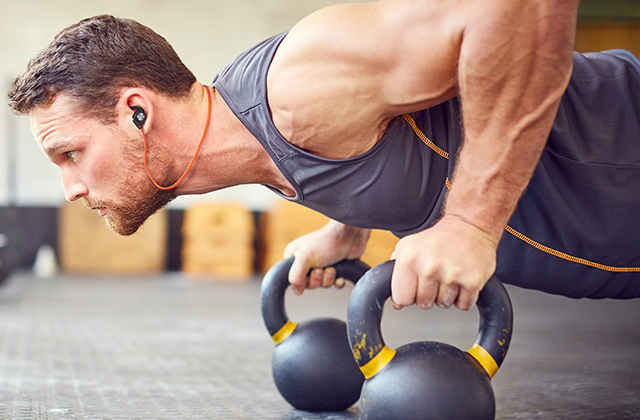INTRODUCTION
To understand Pilates, it is helpful to know where it originated. What many people may not know is that Pilates is named after the man, Joseph Pilates, who developed it. “Contrology” is what he called it because he strongly believed in a connection between the body, mind and spirit. He integrated the effects of six core principles: centering, concentration, control, precision, breath, and flow into every action. Either on the mat or on specific Pilates equipment that Joseph Pilates himself designed, these principles are the foundation of all exercises. It’s helpful to coordinate with your pilates instructor course for scheduling your workout program.
In most Pilates classes you will notice an emphasis on the pelvis placement, rib cage, scapula, and cervical spine (neck). Pilates consist of many exercise movements. If the above principles are incorporated into each and every movement you will notice amazing results within your body mind and spirit. This focused concentration increases the effectiveness and results in greater learning compared to mindlessly doing the exercises.
There are many benefits you can expect that range from better posture, greater core strength, increased flexibility and mobility, enhanced balance, back pain relief and overall improvement in body awareness. The list goes on with several other benefits that include an increase in neuromuscular coordination, better circulation, decrease in anxiety, relaxation, joint health, better functioning organs, increase in energy, decrease in depression, increase in recovery time from stroke or other neurological issues, help with herniated discs or injured vertebrae, pain relief from sciatica etc etc. The benefits don’t stop there. If you’re interested in reading more about the benefits of Pilates please look for my article entitled ‘The Benefits of a Good Pilates Program’.
THE PILATES PRINCIPLES
Joseph Pilates did not directly state the following as Pilates principles. They are concepts drawn from his work by later instructors to establish cohesive uniformity of instruction. Due to this, there is disagreement between the various Pilates camps regarding the words used for concepts, the number of principles, and even the principles themselves. I have included principles that are very important to MOST instructors and will serve you if you understand and adhere to them. The principles that are listed below will be of benefit to any quality Pilates program”
Concentration: By focusing on your mind-body awareness you will be able to establish a superior connection with your body, and you will gain benefits from your workouts. It is best to do each exercise in a precise and slow manner, rather than rushing through them or performing them with incorrect form or alignment. You can obtain maximum results by putting your complete attention to each movement as you do it.
Centering: By paying attention to the muscles of the abdomen or core (some call it the Pilates Powerhouse) all of your muscles function and develop more efficiently. The Pilates Powerhouse is located between the top of the pubic bone and the bottom rib. In all Pilates movements we bring our focus to this area first to create a centered, power in the body.
Control: In Pilates we focus on quality rather than quantity or speed. Control, rather than sloppy, high-intense or repetitive movements is the key to performing the exercises correctly. Movements are performed with muscular control, to gain maximum benefits. Generally we don’t isolate just one muscle but rather incorporate a movement pattern that recruits anatomy trains to create flow and precision. Subtle shifts in movements help gain control and result in profound results.
Precision: In Pilates, precision is key. Precision is achieved by maintaining awareness throughout each movement. Body parts are aligned relative to other body parts. Every part of the body has a specific line of movement. Proper form is essential to ensure you gain the most benefit from each exercise with the goal of creating uniform muscle development.
Flow: Pilates is synonymous with flow. Set your intention to complete each movement with grace and fluidity. The goal is that energy flows evenly throughout the body during an exercise. Imagine yourself a graceful ballerina, gymnast, or dancer
Breath: A full breath is central to all of Joseph Pilate’s exercises. He used the metaphor of the lungs as bellows to strongly pump the air completely in and out of the body. The ribs are expanded in two directions – to the sides and out to the back – without lifting the shoulders. Controlling the breath as you perform each exercise warms the body and helps activate your muscles while keeping you focused. The most efficient gas exchange occurs when we breathe into the lowest depths of our lungs.
Pilates exercises incorporate breathing in and out consciously, and in conjunction with the movement. Proper breath work is the building block of all Pilates movements and an integral part of any good Pilates exercise program.
PLACEMENT GUIDELINES
Pelvis placement
We talk a lot about the placement of the pelvis in Pilates. It is important to truly understand the concepts of a Neutral and an Imprinted pelvis as these are two pelvic positions that we use during a class. A neutral pelvis maintains the normal curvature of the lower back and when lying on your back your hip bones and your pubic bone are on the same plane and parallel to the floor. Think about a grape under your lower back and try not to squish the grape. This is a neutral pelvis and spine. You shouldn’t feel any strain on your back in this position.
If you were to tilt your pelvis so that your hip bones draw towards your rib cage your lumbar spine would naturally lengthen towards the floor and you would now be in an imprinted position. The front body would shorten and the back body would lengthen. Finding neutral and imprint may take some time to perfect but a knowledgeable instructor should be able to get you there in not time.
Ribcage placement
The position of the ribcage affects the alignment of the spine (mostly the Thoracic spine). When lying on your back try to maintain the sense of the weight of your ribs resting gently on the mat without forcing them down. The tendency is to pop the rib cage upwards at the front while inhaling or moving the arms overhead. Focus on a lateral breath into the back and sides to avoid this popping. Also when moving the arms overhead, stop the arms if you notice the ribcage popping.
Scapular Stability
The shoulder blades (scapulae) are not attached to any other bony structure and can therefore add to or take away from neck or shoulder strain. Before any movement in Pilates, it is essential that the scapulae are stabilized on the rib cage. To achieve proper placement of the scapulae think of the front of the collar bone and the shoulders as parallel. Wide across the front body and wide across the back body. Avoid over rounding the shoulder forward or over squeezing the shoulders together toward the spine. Also avoid over lifting the shoulder to the ears (elevation) or cramming the shoulders too far downward (depression). Choose a relaxed position between elevation and depression to find the best position for the shoulder blades.
Head and cervical spine placement
Generally in Pilates the neck or cervical spine should be a continuation of the Thoracic spine. Therefore if the thoracic spine is in flexion the neck should be in slight flexion. When the thoracic spine is in extension the neck is in slight extension. When the thoracic spin is in neutral so should the neck be. Your head should always be balanced in the centre point between your shoulders. Your instructor may have put your head on a pillow or block so that you are more comfortable or in a better aligned position.
CONCLUSION
Pilates consist of many exercise movements. If the above principles are adhered to your Pilates experience will be a positive one and you will reap amazing results. It is the student who spends the time and effort truly learning and understanding these principles that will truly understand and benefit from the Pilates method of exercise. One thing is not any more important than the other. Our body is an intricate highway of pathways that rely on safe, effective movement to keep us in our best physical and mental state ever. Pilates does just that.
“Contrology develops the body uniformly, corrects wrong postures, restores physical vitality, invigorates the mind and elevates the spirit.” Joseph Pilates.
We’d love to hear from you. If you have any questions, comments or feedback please don’t hesitate to contact us at keefit.com
Thank-you,
Kathi Ells
[http://www.keefit.com]
If you enjoyed this article and would like to know more about pilates, visit our blog [http://www.keefit.com] or follow us on twitter @keefit_pilates. Making pilates accessible and understandable to everyone.
Kathi Ells
Article Source: http://EzineArticles.com/expert/Kathi_Ells/929988
Article Source: http://EzineArticles.com/6053902



